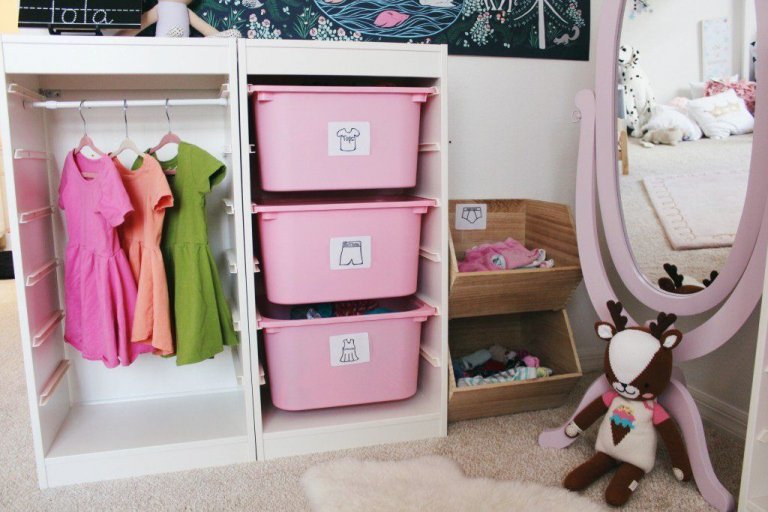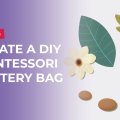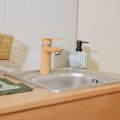You can watch as your child becomes a wondrous human that enjoys discovering, engaging, and taking on challenges as they arrive. Everyday routines such as cleaning, dressing, preparing food, and other habitual activities can often be very exciting, but also daunting for your little ones. However, Montessori methods take full advantage of a child’s motivation and understanding of practicality at a young age.
The practical life curriculum is a sequence of everyday practices and routines. It empowers children in their pursuit of these crucial life skills. Practical life in Montessori is a very purposeful activity when you have the right tools.
Practical life in Montessori parenting is all about teaching kids important skills they can use in their everyday lives, while having fun and feeling empowered! These activities help children become more independent, focused, and coordinated, while also building their self-esteem and sense of responsibility.
In a Montessori classroom, practical life activities might include things like pouring, spooning, or polishing, and they’re presented in a way that gradually increases in difficulty, so kids can build their skills over time. They help to develop coordination, motor control, independence, responsibility, and concentration. In general, the exercises your child will participate in will cover two distinct areas of development. These two areas are care of self, and care of the environment.
At home, there are lots of ways to adapt practical life activities for your kids. They might love helping you cook or bake, caring for a pet or plant, or even just setting the table or folding laundry. The key is to give them the chance to learn real-life skills that will come in handy, while also having fun and feeling confident in their abilities. So let’s get started and see what amazing things our little ones can do!
There’s so many ideas for practical life activities available, it’s hard to know where to start. So, to help you create effective tasks for your little ones, I’ve put together a list of 15 qualities to consider when creating a practical life activity. Let’s take more of a look, shall we?

What Are Practical Life Activities?
Practical life Montessori is perfect for all ages. Yes, this even includes infants! However, it will just depend on what your child can do at their individual stage of development.
These activities can even be as simple as washing hands, pulling up pants, or putting a shirt on! You can also make it as complicated as developing a business plan or making a dessert! It is all about practicality and teaching your child the skills they will need to thrive in the future.
The Characteristics of Practical Life Exercises
When it comes down to it, there are many different characteristics of practical life exercises. Read more about the characteristics below!
- Reality-Based: These activities are all reality-based. You wash dirty dishes with soapy water, cut fruit with a knife, and clean shoes with polish. Just ensure safety.
- Not Limited: Many people make the mistake of thinking that practical life activities are limited by what you’ve learned. However, they are limitless. You can technically create your own by following theoretical practical life activity guidelines.
- One of Each: There is no real limit to how many practical life activities you can have in one environment. However, there should only be one of each activity. This allows your child to learn about waiting and that gratification isn’t always immediate. Materials will also be more valued by your child. Keep in mind that you can keep other activities away to swap them out. All you need is some storage furniture!
- Self-Contained: In this instance, materials need to be contained within a basket, tray, or contained in a certain space. All of the materials should be completely prepared and ready for use. Adults need to ensure the whole activity is prepared for the successful completion of the activity. External order equals internal order. Containers and trays should be a good size. They can’t be too big or too small for the child to handle. They still need to be deep enough to hold content without them falling out when being carried.
- Complete: This activity needs to be complete. Then, if at the end of the activity something is needing to be re-stocked, you show them how to do it. The item needs to remove anything broken or missing or complete it.
- Location of Materials: Materials need to be placed in groupings such as food activities in the food prep area, and the water activities near a water source. If you’re doing a Montessori pouring activity, you should be near water, for example.
- Sequential: Each activity has a beginning, middle, and end. If you’re baking, the first cue can be to put on an apron. If the child is wearing an apron, the adult should too.
- Colour-Coded: Every item in the activity should be colour-coordinated or expressed on every item. This way, the child can easily identify where items belong together and place pieces easily. If coordination is difficult, you can use neutral colours and coordinate them with ribbon, paint, or electrical tape.
- Functional: All materials need to have a clear function and purpose. There is nothing worse than an object not completing its intended task. Knives in activities need to be able to cut, otherwise, they aren’t functional. The child may search for something else to do the action with that isn’t appropriate for use or the child may think they are incompetent when it comes to doing the task.
- Child-Sized: Materials must always be proportional to the child. Even the size of the brush, sponge, knife, or piece of paper must be proportionate to the child to ensure that they can use it successfully and without fail.
- Proportional Items: The materials you use in any activity must also be proportional to each other and functional when it comes to size. The bucket must be small enough for the child to handle but must also be able to hold the materials that are necessary for the exercise at hand.
- Natural Materials: Montessori practical life materials that are natural offer a whole new world of opportunities for multi-sensorial experiences. They are also more aesthetically pleasing and far nicer to the touch than other objects. Even your bookshelf can be made from natural materials!
- Safety: Materials do need to be functional, but you also need to prioritise safety. You should always use non-toxic material as it is far safer for everyone. Sharper objects always need to have rounded ends and corners that are sharp need to be either covered or sanded.
- Orderly: Order should always be in a logical Montessori practical life sequence whether it is how you lay the activity on a shelf or present the material.
- Environmental: Practical activities should always reflect the reality of the child’s environment. You should choose activities for them that are prevalent to their life. For example, if there are no windows, you wouldn’t set up a window cleaning exercise!

The Bottom Line
If you’re considering implementing practical life Montessori, you should definitely do it! It provides all of the baselines for all other Montessori activities. The pouring, scrubbing, washing, gardening, and sewing can do so much for a child and their development.
Follow the tips above, and you will be well on the way to implementing practical life Montessori in your child’s environment. Practical life activities make a huge difference to your child! For the best outcome, you can make a Montessori practical life activities list!








